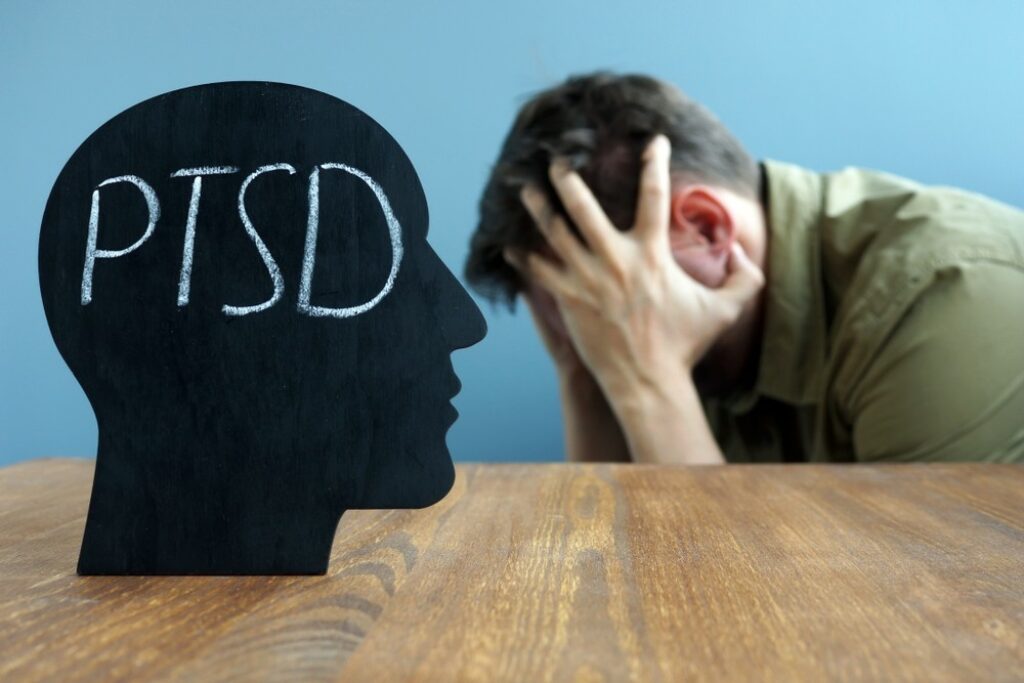
Post Traumatic Stress Disorder
Of all the mental health disorders that a person can suffer from, Post Traumatic Stress Disorder (PTSD) is often considered one of the most complex. Fortunately, there are several treatment methods available that have shown to be effective in reducing its varying symptoms.
Related Topics (Sponsored Ads):
Post-Traumatic Stress Disorder (PTSD) is a mental health condition that can develop after an individual experiences or witnesses a traumatic event. This can include events such as natural disasters, accidents, physical or sexual assault, combat, or other life-threatening situations. PTSD is characterized by a range of persistent and distressing symptoms that can significantly impact an individual’s daily functioning, relationships, and overall quality of life.

Symptoms of PTSD
The symptoms of PTSD can be broadly categorized into four main groups: intrusive memories, avoidance, negative changes in mood and cognition, and changes in physical and emotional reactions.
Intrusive memories may include recurrent, unwanted, and distressing memories of the traumatic event, as well as flashbacks or nightmares. Individuals may feel as if they are reliving the event, experiencing intense emotional and physical reactions when exposed to reminders of the trauma.
Avoidance symptoms involve deliberate efforts to avoid thoughts, feelings, or external reminders associated with the traumatic event. This can manifest as avoiding certain places, people, or activities that may trigger memories of the trauma.
Negative changes in mood and cognition can include persistent negative beliefs about oneself or the world, feelings of detachment or estrangement from others, and difficulty experiencing positive emotions. Individuals may also experience memory problems or a sense of hopelessness about the future.
Changes in physical and emotional reactions, such as hypervigilance, irritability, difficulty sleeping, and difficulty concentrating, are also common in PTSD. These symptoms can lead to self-destructive behaviors, such as substance abuse or reckless driving.
Risk Factors for PTSD
While anyone can develop PTSD after experiencing a traumatic event, certain factors can increase the risk of developing the condition. These include the severity and duration of the trauma, the individual’s personal history of trauma or mental health issues, and the availability of social support and coping resources.
Individuals who have experienced childhood trauma, such as abuse or neglect, are at a higher risk of developing PTSD later in life. Additionally, those with a family history of mental health disorders or a pre-existing mental health condition may be more vulnerable to PTSD.
Effective treatment for PTSD typically involves a combination of psychotherapy and medication. The three most widely recognized and evidence-based treatment methods follow.
Cognitive-Behavioral Therapy (CBT)
CBT is considered the gold standard in PTSD treatment, as it has been shown to be highly effective in reducing PTSD symptoms.
This approach focuses on identifying and challenging negative thought patterns and behaviors that contribute to the individual’s distress, and replacing them with more adaptive coping strategies.
Specific CBT techniques used in PTSD treatment include Prolonged Exposure Therapy, Cognitive Processing Therapy, and Eye Movement Desensitization and Reprocessing (EMDR). CBT is suitable for individuals of all ages and can be delivered in individual or group settings.
Pharmacotherapy
Medication can be an important component of PTSD treatment, particularly in cases where symptoms are severe or debilitating.
The most commonly prescribed medications for PTSD are selective serotonin reuptake inhibitors (SSRIs), such as sertraline, paroxetine, and fluoxetine, which have been shown to effectively reduce PTSD symptoms.
Other medication classes, such as serotonin-norepinephrine reuptake inhibitors (SNRIs) and benzodiazepines, may also be used in certain cases, but their use is more limited due to potential side effects and the risk of dependence. Medication is often used in conjunction with psychotherapy to provide a comprehensive treatment approach.
Complementary and Alternative Therapies
In addition to traditional psychotherapy and pharmacotherapy, various complementary and alternative therapies have shown promise in the treatment of PTSD. These include mindfulness-based interventions, yoga, acupuncture, and neurofeedback, which can help individuals manage symptoms, reduce stress, and improve overall well-being. Such therapies are often used as adjuncts to traditional treatments and can be particularly beneficial for individuals who prefer a more holistic approach to their care.
Self-Help Measures
While professional treatment is essential for managing PTSD, there are also several self-help measures that individuals can implement to help prevent or minimize the impact of PTSD symptoms. These include:
1. Practicing relaxation techniques, such as deep breathing, meditation, or progressive muscle relaxation, to manage stress and anxiety.
2. Engaging in regular physical exercise, which can help reduce symptoms and improve overall well-being.
3. Maintaining a healthy sleep routine, as sleep disturbances are common in PTSD and can exacerbate other symptoms.
4. Seeking social support from family, friends, or support groups, as strong social connections can be a valuable resource in the recovery process.
5. Avoiding the use of alcohol or drugs as a coping mechanism, as these can ultimately worsen PTSD symptoms and lead to additional problems.
6. Keeping a journal to process thoughts and emotions related to the traumatic event and the recovery process.
Final Thoughts
Post-Traumatic Stress Disorder is a complex and challenging mental health condition that can have a significant impact on an individual’s life. However, with the right combination of professional treatment and self-care strategies, individuals with PTSD can learn to manage their symptoms, improve their overall well-being, and reclaim their lives.
By understanding the symptoms, risk factors, and evidence-based treatment options, healthcare professionals and individuals can work together to navigate the complexities of PTSD and promote healing and recovery.




